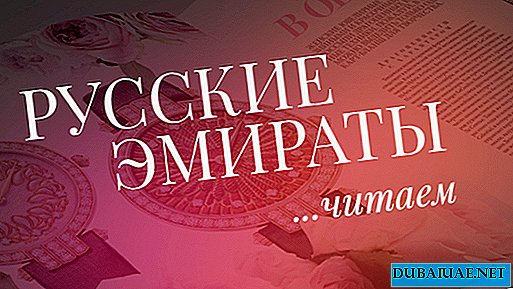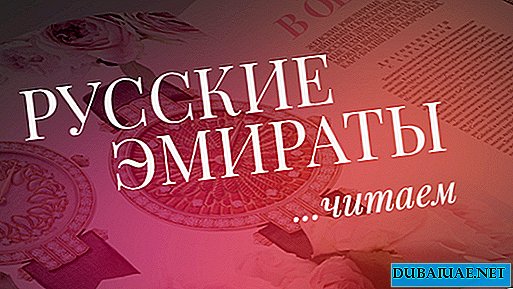TRADITIONAL RUSSIAN WEDDING - THE OBJECT OF STUDYING PAINTERS OF ALL EPOS. SHEET ALBUMS BY ART, EASY TO FOLLOW HISTORY OF NATIONAL COSTUME, LEARN ABOUT DIFFERENT TRADITIONS AND RITES, ABOUT LIFE AND TALES OF OUR ANCESTORS ... TODAY'S BEAUTIFUL FRESHES OF FRESHWOOD.
 Wedding is one of the most beautiful Russian rituals. As a rule, the celebration itself lasted for several days (from three to a week), and preparations for creating a new family could even last for years. At the same time, marriageable age was already at 12 years old, and after twenty unmarried girls could well be included in the category of old maids.
Wedding is one of the most beautiful Russian rituals. As a rule, the celebration itself lasted for several days (from three to a week), and preparations for creating a new family could even last for years. At the same time, marriageable age was already at 12 years old, and after twenty unmarried girls could well be included in the category of old maids.
You have a product, we have a merchant
The formation of a new unit of society, as a rule, began with matchmaking. According to Slavic custom, the proposal was made, referring to the parents of the bride. And if the groom's family looked after a worthy party for their son, then matchmakers were sent to the house of the potential bride. Usually the delegation included godparents, close relatives, and (less commonly) friends. During the ceremony, the groom always spoke about his deep feelings for the girl and "asked her hands" from his father. From the future father-in-law was required to refuse a couple of times and only then give consent to the marriage of his daughter. But if consent was given, the father of the future wife put the daughter’s right hand in the hand of his future son-in-law.
Often the conversation of the arrivals matchmakers began from afar. For example, from the words: "You have a product, we have a merchant ...". The allegoricalness of the conversation was of particular importance: it was believed that only in this way can unclean evil be confused - to prevent it from harming the young or upsetting the wedding.
Looks, therefore, they ...
A few days after the matchmaking, the rite of Smotrin followed. So the advantages and disadvantages of the future hostess of the house were checked. At the same time, the groom and his parents and the matchmaker went to the bridegroom in a roundabout way - drove in as far as possible and sometimes made a whole circle: as usual, they "messed up the matter." And the bride had to wait patiently, demonstrating high morality and humility, and during the ceremony, also the absence of flaws.
However, "housebreaking" is often involved in the groom's house. Especially if the guy was from a neighboring village or province. The bride's father and next of kin went to look at the farm. Everything was evaluated, from buildings and cattle to household utensils and bedding. If guests were satisfied with life, they were invited to a generous table with refreshments. Here began the discussion of dowry and wedding gifts.
By the way, disputes about the size of the dowry could drag out the process for weeks. For example, it was agreed that the bride and groom gives each relative of the groom a towel, and the future mother-in-law - three shirts and a cloth for a sundress and a scarf. The father-in-law and the groom were supposed to wear a shirt and underpants.
Usually, the bride appeared on the bride with a covered face: and only in rare cases did the future husband manage to look under the veil. The successful outcome of the case was celebrated with a hoppy feast. A barrel of beer or wine was always brought by the groom's relatives, and snacks were exhibited by the bride. So the culinary abilities of the future wife were evaluated.
Hacking
After a successful matchmaking in Russia, a handshake was arranged - the young fathers agreed on the dates of the wedding, forthcoming expenses, the number of gifts, the laying (the form of material support for the bride from the groom's relatives), the dowry ... Also, wedding ranks were distributed during the conspiracy. Experts say that for a long time in Russia, conspiracy was even considered more important than the very celebration of the wedding. And not to marry after the mansion was considered a crime.
During this rite, the groom and close relatives gathered in the bride's house. A so-called line record was written: the obligations of both parties, names, dowry, forfeits, backward were stipulated ... Even possible beatings of the future wife and the size of the fine imposed on the offender were mentioned! At the end of the ceremony, the fathers of the bride and groom beat each other's hands, often wearing canvas gauntlets. This meant the strength and compulsory performance of the contract. After the "bust", the bride was considered proschatannaya.
The conspiracy was always accompanied by a holiday, and wealthy families rented whole mansions, specially designed for the celebration of the mansion. At all estates, the groom gave the bride a ring with a stone and ordered engagement engagement rings: on the bride’s ring, the groom’s initials, on the groom’s ring, the bride indicated the date of engagement required for both rings.
On the second day after the conspiracy, a ceremony was held to present the bride with icons that, along with the dowry, were brought into the groom's house. The groom brought presents and gifts for the bride, her girlfriends and family. The dowry was transported to the groom's house before the wedding. The dowry was always met by the mother of the groom or the older married sister. As soon as the “train with dowry” departed from the bride’s house, joint prayers of the newlywed and her mother began.
By the way, the line record was not considered, like the European marriage contract, an official document. But the authority of the handshake itself was unquestioned! After the conspiracy, a bachelorette party (peasant tradition) and a bachelor party (all classes) were arranged, and then a church announcement took place.
The priest, in whose parish the young ones were, was notified - verbally or in writing - of their desire to marry: the “name, rank or condition” of the bride and groom was announced. At the same time, the priest announced the names of those wishing to marry after the Liturgy three Sundays in a row. All this made it possible to establish whether there are obstacles to marriage. After all, after three announcements, a ticket was issued, on the basis of which a “search” was drawn up on the bride and groom on the wedding day, which was recorded in a special church “search” book. The "search" was signed by the bride and groom, as well as two or three guarantors and the priest of the church.
Farewell to a free life
After the conspiracy, the bride, along with her friends, began to sew a dowry. And a few days before the event, the housewives baked bread and prepared holiday snacks. Every day, meeting girlfriends, the girl traditionally complained about her own share. The culmination of the last days of free life was a trip to the bathhouse. Here, for the last time, the bridesmaids untied the braid to the bride and dismantled the ribbons: a married woman traditionally weaved two braids. Of course, all this happened under the incessant sobs of others.
Wedding ringing
In Tsarist Russia, the wedding ceremony remained the only way to register a marriage. On the wedding day for the young, they built a wedding train decorated with ribbons. Places on a sleigh, if the celebrations were held in the winter, were occupied by seniority - from planted parents to distant relatives and acquaintances. Usually the route started from the groom’s house and moved to the bride’s yard, where the priest and the matchmaker were already waiting for the couple to perform a special rite of “winding up” the young one. This ritual was carried out immediately after the wedding on the church porch or in the gatehouse of the church, and sometimes already in the groom's house - in front of the prince's table, in the middle of the wedding feast or after the wedding night.
During the “winding up” ceremony, the bride, in the presence of the groom, his parents, boyfriends and svenas, changed her hairstyle and headdress from female to female. So, in some villages of the Russian North, a woman’s hairstyle (two braids instead of one) was braided by bridegrooms and the bridegroom. At the same time, the bride-mother-in-law sentenced: "Wear the girls." A matchmaker from the groom: "Wear well done." Each tried to braid the braid first, believing that the sex of the unborn child depends on her efforts. Braided braids were placed around the head and covered with a kokoshnik, a collector, or a warrior with the words: “The braid became a two-tailed one, it went away under the warrior, hid” The transition to a women's hairstyle and putting on a headdress was considered an important ritual moment of the Russian wedding: "girlfriends weave a braid for an hour, and matchmakers for an eyelid." By the way, the songs performed by the suds when changing hairstyles and headgear were different in different villages and provinces. However, one and the same theme was traced in them: the statement of the girl in a new status.
If a feast, then a feast mountain
Wedding feasts were traditionally arranged in the groom's house. At the doorstep, guests were greeted with bread and salt and sprinkled with oats and millet, symbolizing wealth and protection from evil spirits. The young husband always carried the narrowed one across the threshold of the house in his arms in order to deceive the brownie: he allegedly brought into the house not an outsider, but his own baby. It was believed that so the bride received protection of the spirit of the house. A wedding swan was always placed on the table - a symbol of conjugal love. Later, the game was replaced by chicken. The meal had a ritual significance. Usually, after the wedding, the young people were not allowed to eat or drink, but immediately escorted them to the canopy to fulfill their marital duty. At the same time, the chicken was wrapped in a towel, and after the sacrament was performed, the newlyweds who had come to the table were treated with a stocked snack.
On the second day of the wedding, the couple already took pride of place at the wedding table and joined the common feast. They listened to blessings and received expensive gifts. Often the celebrations, which were prepared for several weeks, ended there, however, if the funds allowed, the wedding festivities could continue and go to numerous visits to relatives' homes or a trip to holy places. Nowadays, many young couples eagerly pay tribute to traditions and arrange truly folk weddings. True, the harnessed sleigh was replaced by limousines, and the houses of friends were fashionable hotels and yachts. But this is a completely different story!









